Abstract
The serum viscosity of diabetic patients has been found to be increased. The elevation averaged 8% above healthy subjects and 6% above nondiabetic patients. The serum viscosity elevation was greater when diabetic sequelae associated with microangiopathy were present. No relation of serum viscosity to age, sex, obesity, duration of disease, or type of treatment was demonstrated. Serum total protein and glucose levels were found to be correlated with serum viscosity, and increases in their serum concentrations were observed in diabetes. Analysis demonstrated that their elevation did not explain either the viscosity increase or the difference in viscosity between diabetics with and without sequelae.
Intrinsic viscosity, abbreviated [η], is a concentration-independent solute property related to molecular shape. [η] was found to be 7% higher in diabetic than in normal serum. The [η] difference accounted for at least half of the serum viscosity elevation. The rest of the increase was due to increased serum protein level and increased nonprotein solids, presumably glucose and lipid. Associated with increased [η] was a decline in albumin: globulin ratio and elevation of the acute phase reactant proteins, α1-acid glycoprotein, α1-antitrypsin, haptoglobin, and ceruloplasmin. Studies comparing diabetic and normal serum fractionated by using 21.5% sodium sulfate showed that changes in [η] were attributable to changes in serum protein composition rather than an inherent qualitative disturbance of protein present in one of the fractions.
Since serum viscosity is elevated in early diabetes, it may be a part of the metabolic disturbance of diabetes and could play a role in the development of diabetic microangiopathy.
Full text
PDF
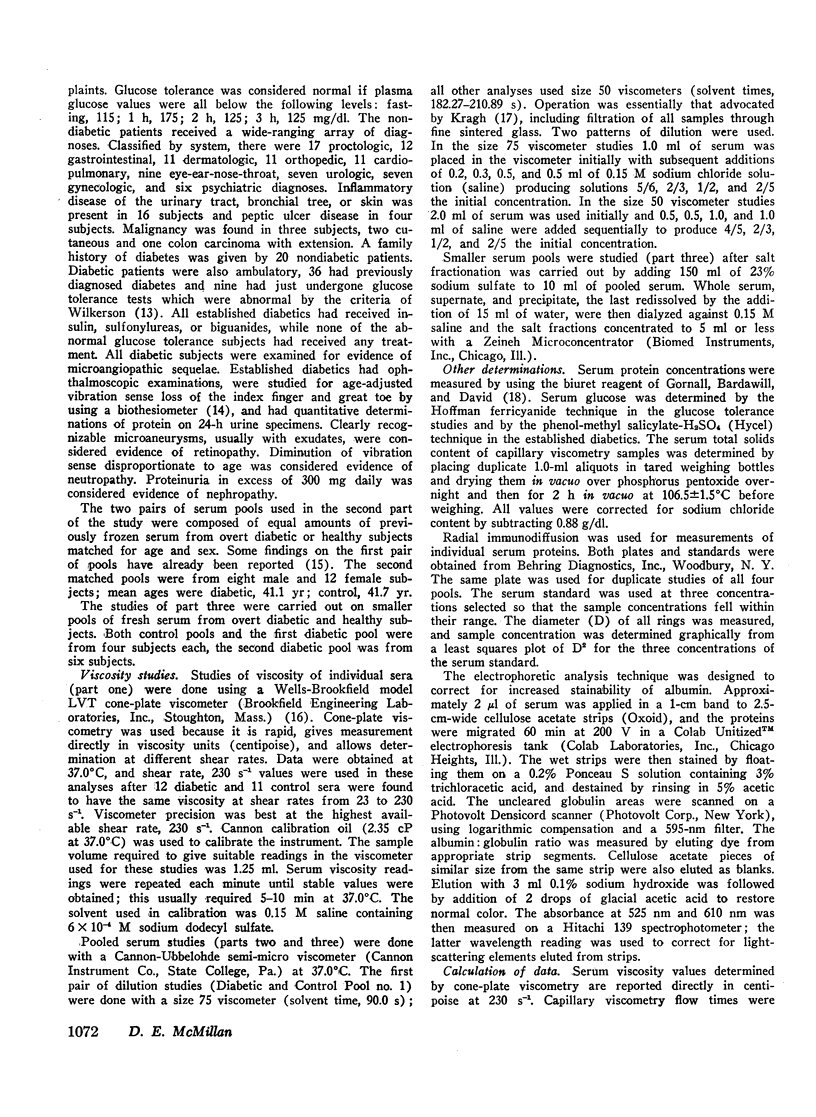
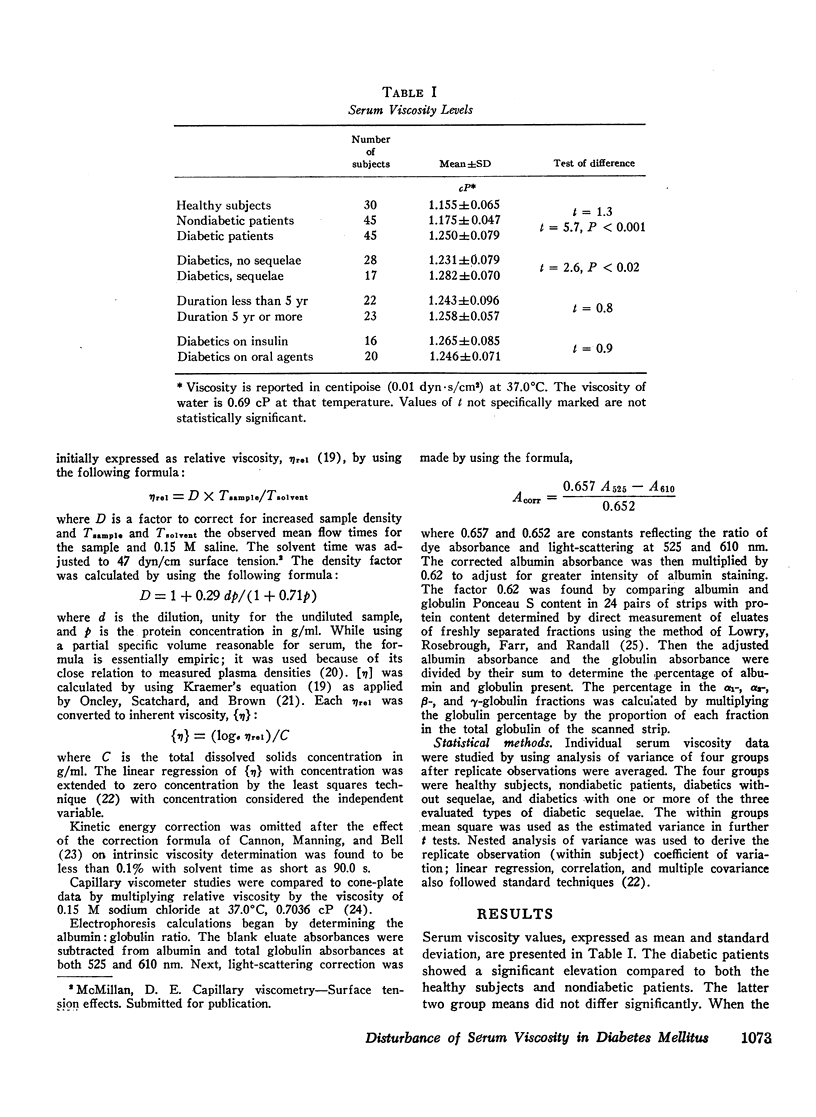
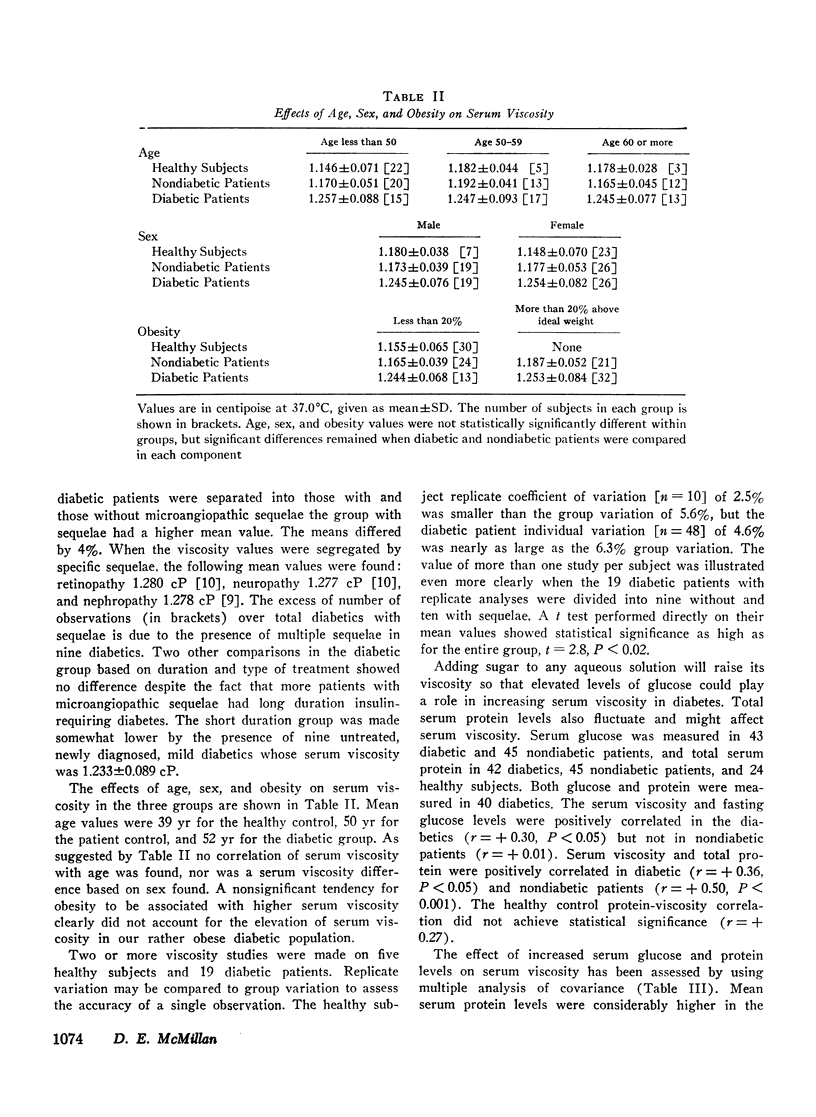
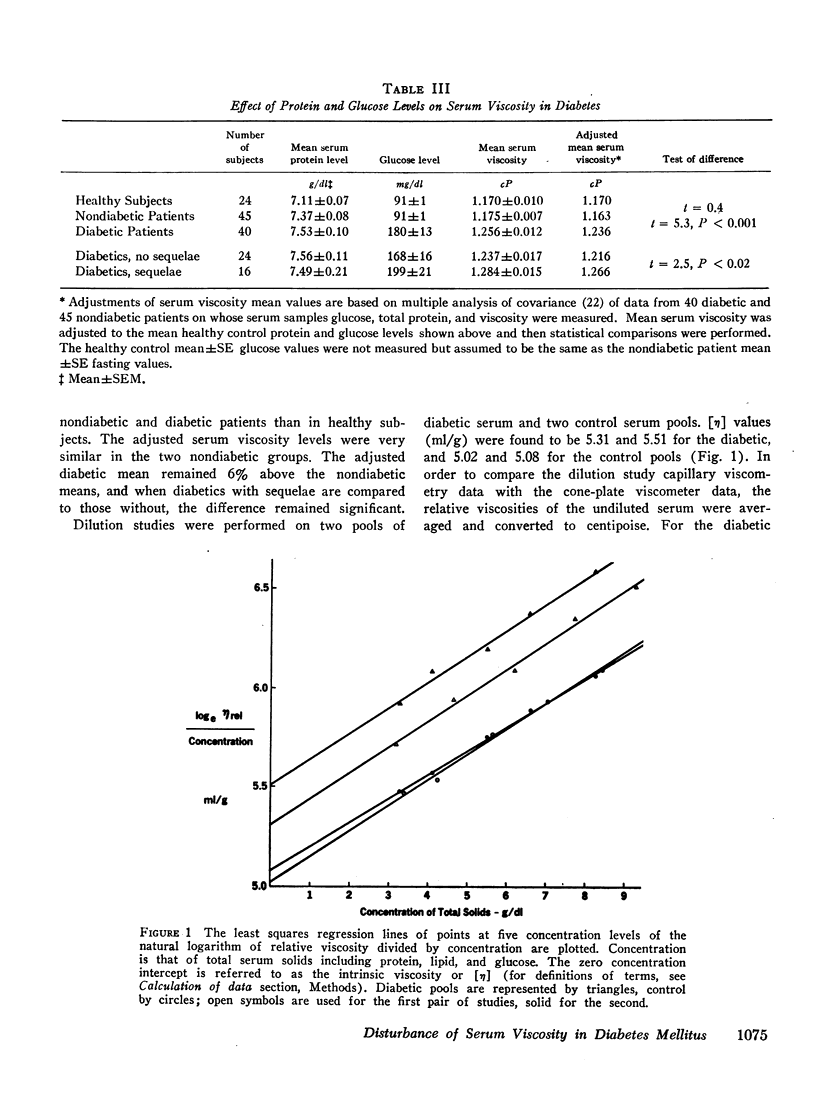
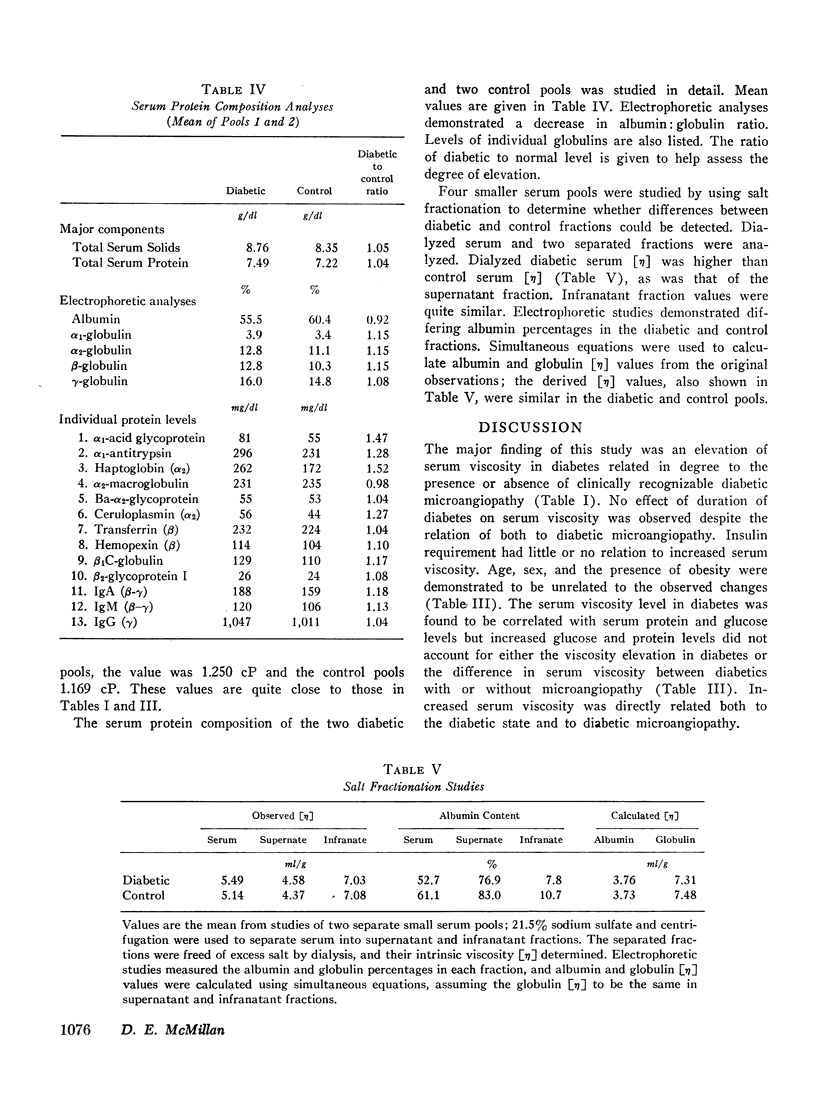
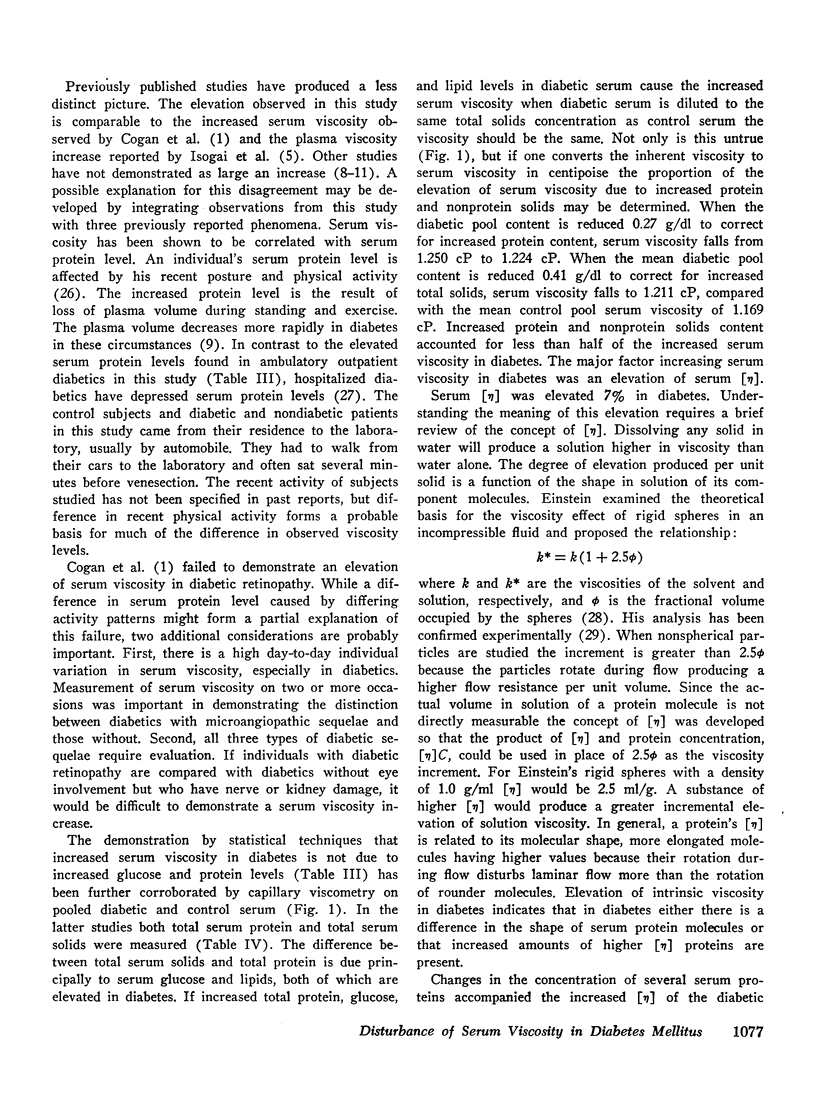
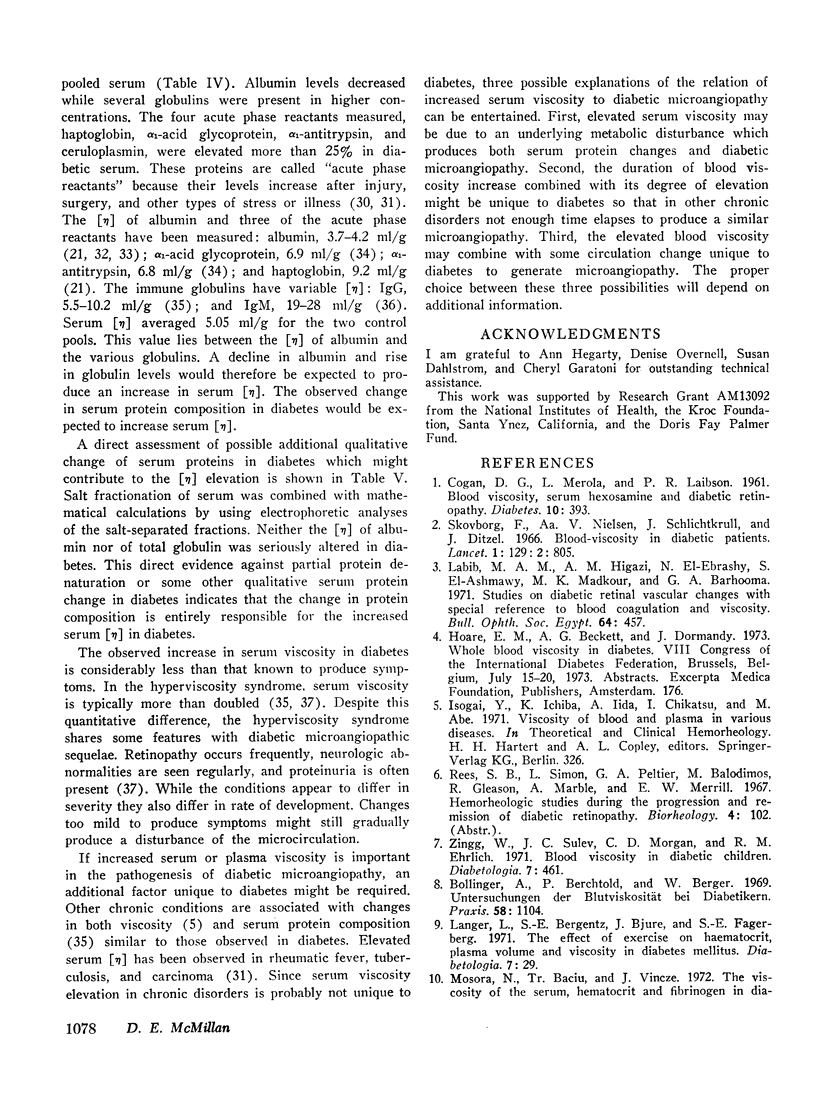
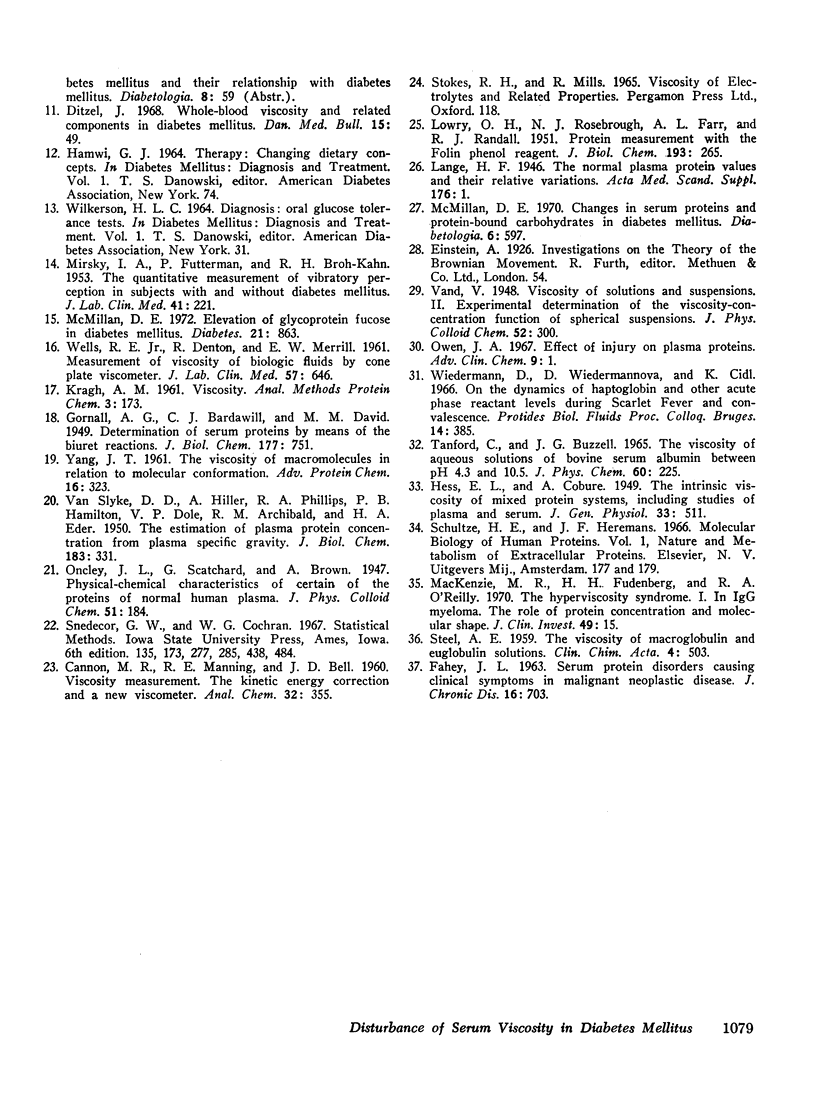
Selected References
These references are in PubMed. This may not be the complete list of references from this article.
- Bollinger A., Berchtold P., Berger W. Untersuchungen der Blutviskosität bei Diabetikern. Praxis. 1969 Sep 2;58(35):1104–1107. [PubMed] [Google Scholar]
- COGAN D. G., MEROLA L., LAIBSON P. R. Blood viscosity, serum hexosamine and diabetic retinopathy. Diabetes. 1961 Sep-Oct;10:393–395. doi: 10.2337/diab.10.5.393. [DOI] [PubMed] [Google Scholar]
- Ditzel J. Whole-blood viscosity and related components in diabetes mellitus. Dan Med Bull. 1968 Feb;15(2):49–53. [PubMed] [Google Scholar]
- FAHEY J. L. SERUM PROTEIN DISORDERS CAUSING CLINICAL SYMPTOMS IN MALIGNANT NEOPLASTIC DISEASE. J Chronic Dis. 1963 Jul;16:703–712. doi: 10.1016/0021-9681(63)90006-7. [DOI] [PubMed] [Google Scholar]
- HESS E. L., COBURE A. The intrinsic viscosity of mixed protein systems, including studies of plasma and serum. J Gen Physiol. 1950 May 20;33(5):511–523. doi: 10.1085/jgp.33.5.511. [DOI] [PMC free article] [PubMed] [Google Scholar]
- LOWRY O. H., ROSEBROUGH N. J., FARR A. L., RANDALL R. J. Protein measurement with the Folin phenol reagent. J Biol Chem. 1951 Nov;193(1):265–275. [PubMed] [Google Scholar]
- Labib M. A., Higazi A. M., el-Ebrashy N., el-Ashmawy S., Madkour M. K., Barhooma G. A. Studies on diabetic retinal vascular changes with special reference to blood coagulation and viscosity. Bull Ophthalmol Soc Egypt. 1971;64(68):457–482. [PubMed] [Google Scholar]
- Langer L., Bergentz S. E., Bjure J., Fagerberg S. E. The effect of exercise on haematocrit, plasma volume and viscosity in diabetes mellitus. Diabetologia. 1971 Feb;7(1):29–33. doi: 10.1007/BF02346251. [DOI] [PubMed] [Google Scholar]
- MIRSKY I. A., FUTTERMAN P., BROHKAHN R. H. The quantitative measurement of vibratory perception in subjects with and without diabetes mellitus. J Lab Clin Med. 1953 Feb;41(2):221–235. [PubMed] [Google Scholar]
- McMillan D. E. Changes in serum proteins and protein-bound carbohydrates in diabetes mellitus. Diabetologia. 1970 Dec;6(6):597–604. doi: 10.1007/BF00418228. [DOI] [PubMed] [Google Scholar]
- McMillan D. E. Elevation of glycoprotein fucose in diabetes mellitus. Diabetes. 1972 Aug;21(8):863–871. doi: 10.2337/diab.21.8.863. [DOI] [PubMed] [Google Scholar]
- Owen J. A. Effect of injury on plasma proteins. Adv Clin Chem. 1967;9:1–41. doi: 10.1016/s0065-2423(08)60284-x. [DOI] [PubMed] [Google Scholar]
- STEEL A. E. The viscosity of macroglobulin and euglobulin solutions. Clin Chim Acta. 1959 Jul;4:503–506. doi: 10.1016/0009-8981(59)90156-1. [DOI] [PubMed] [Google Scholar]
- Skovborg F., Nielsen A. V., Schlichtkrull J., Ditzel J. Blood-viscosity in diabetic patients. Lancet. 1966 Jan 15;1(7429):129–131. doi: 10.1016/s0140-6736(66)91264-5. [DOI] [PubMed] [Google Scholar]
- WELLS R. E., Jr, DENTON R., MERRILL E. W. Measurement of viscosity of biologic fluids by cone plate viscometer. J Lab Clin Med. 1961 Apr;57:646–656. [PubMed] [Google Scholar]
- YANG J. T. The viscosity of macromolecules in relation to molecular conformation. Adv Protein Chem. 1961;16:323–400. doi: 10.1016/s0065-3233(08)60032-7. [DOI] [PubMed] [Google Scholar]
- Zingg W., Sulev J. C., Morgan C. D., Ehrlich R. M. Blood viscosity in diabetic children. Diabetologia. 1971 Dec;7(6):461–462. doi: 10.1007/BF01212063. [DOI] [PubMed] [Google Scholar]


